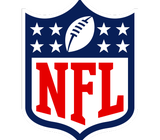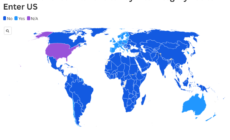-
Ex-MLB pitcher sleeping with family nanny guns down in-laws amid financial struggles - 20 mins ago
-
Alabama, Kalen DeBoer Land Huge News Regarding Elite 2026 QB - 26 mins ago
-
Fox News Entertainment Newsletter: ‘The Cosby Show’ star dead at 54, Christie Brinkley’s devastating moment - 28 mins ago
-
College Football Stock Watch: Teams Joel Klatt Is Buying, Selling Stock in for 2025 - 34 mins ago
-
L.A. Unified test scores rise above pre-pandemic levels. - 40 mins ago
-
Growing share of retirees lean heavily on Social Security, AARP says - 44 mins ago
-
Texas couple finds royal tomb, plus best gas stations for food - 58 mins ago
-
Phillies Called ‘Best Fit’ In Blockbuster Trade For Red Sox All-Star Jarren Duran - about 1 hour ago
-
Bill Cosby mourns Malcolm-Jamal Warner, his on-screen son - about 1 hour ago
-
Trey Hendrickson Posts Florida Highway Photo Amid Bengals Contract Holdout - about 1 hour ago
Coins? Cards? Apps? The hell that is paying for parking in L.A.
Matt Glaeser had just dropped his kids off at their grandparents’ house for the day when he pulled into a parking spot near Sam’s Bagels on Larchmont Boulevard on his way to work. He tried to feed the meter from a roll of quarters he keeps in his car, but the coin slot was jammed. He reached for his credit card but then noticed the screen said “Pay by app” and showed a QR code.
He tried to scan the QR code with his phone but the screen was so scratched with graffiti it didn’t work. So he sent a text to the number on the “Pay to Park” sticker below the coin slot. After waiting for a minute and wondering if the text went through, he received a text back with a link to a website. He opened the site on his phone and typed in his credit card number and address. But before he completed the payment, the site alerted him that he would have to pay an additional processing fee just to park for 15 minutes.
“It was only 35 cents, but I was like, ‘Forget this, I’ll find a stale bagel in the office,’ ” Glaeser said.
Finding parking in the L.A. area has long been a struggle, but these days, paying for parking can be just as odious. Depending on whether you’re parking in L.A., Santa Monica, Beverly Hills or Pasadena, a meter might ask you to pay with quarters, a credit card, an app or some combination of all three. In public lots, you might need to memorize a zone, space number or license plate and often don’t know which one until you get to the pay station. It’s enough to make a law-abiding citizen give up, cross her fingers and hope a parking enforcement official doesn’t pass by.
As 25-year-old comedy writer Emma Parsons of Palms put it: “Parking is already one of the things I hate the most. I don’t want to spend more time on it.”
People who study parking acknowledge that the proliferation of parking apps and other methods of payments has made the modern experience of paying for parking unusually complicated and frustrating. The two parking apps L.A. city uses — Park Smarter and ParkMobile — do offer useful innovations like alerting drivers when a parking session is about to expire and allowing them to add more time remotely, but when each city in the SoCal area has contracted with a different app that has to be downloaded on the street in order to avoid a ticket, those perks may no longer seem worth it.
With different parking apps used in different areas around Southern California, drivers are finding that the experience of paying for parking has become unusually complicated.
(Kim Chapin / Los Angeles Times)
Parking apps have been around for more than a decade but researchers say Southern California is still in the early stages of their evolution with a host of providers vying to become the default method of payment for the region. Just as the universal adoption of the USB-C cable has streamlined the ability to charge a variety of devices at home, whether they’re made by Apple, Samsung or another company, experts say a single parking app that allows drivers to pay for parking at meters and lots across the region would greatly reduce frustration and increase compliance. They’re not advocating for one company to have a monopoly on Southern California’s parking meters or for a law that restricts competition, but they say a more uniform system is possible. For instance, Europe’s EasyPark app operates in 20 countries and more than 3,200 cities.
“We’re a bit behind the curve,” said Mike Manville, professor of urban planning at UCLA and author of the recent paper “The Causes and Consequences of Curb Parking Management.” “The apps aren’t new, but they haven’t quite gotten sorted out to a point where we can see if we are going to get some standardization.”
Tony Jordan of the Parking Reform Network, a nonprofit organization that educates the public about the impact of parking policy on climate change, equity, housing and traffic, said he’s hopeful that a more streamlined system will come soon.
“I think we’re getting close,” he said. “The technology is getting there both on enforcement and payment. If we make it through the next couple of years, this problem might get better.”
“Parking is already one of the things I hate the most. I don’t want to spend more time on it.”
— Emma Parsons, 25
Los Angeles, home of the nation’s first freeway and drive-in church, has long been ambivalent if not downright antagonistic toward paid parking. The city installed its first parking meters in North Hollywood in the summer of 1949 (five cents an hour) but only after the city council rejected three previous attempts to put meters on the streets in 1940, 1942 and 1946. Editorials in this newspaper at the time railed against parking meters, with one declaring it would be “just as fair to install turnstiles for sidewalk pedestrians.”
The city kept meter prices fixed for 17 years from 1992 until 2008, when it raised prices as high as $4 an hour for metered parking in the most congested areas. The first meters that accepted credit cards were installed in 2010, years after most people had stopped carrying loose change. As the late Donald Shoup, a professor at UCLA and beloved guru of parking studies used to say, the parking meter was one of the few inventions that barely changed from its inception in 1928.
Today the L.A. Department of Transportation operates 35,261 metered spaces, including 32,944 on-street metered spaces and 2,317 off-street metered spaces, said LADOT spokesperson Colin Sweeney. It also manages 11,347 off-street parking spaces in lots and garages. Collectively, those meters and pay stations collected approximately $40 million in the last fiscal year.
Apps to pay for parking were first introduced in L.A. in 2014, and the widespread adoption of contactless options was accelerated due to the pandemic. Despite some drivers’ frustrations, the city is now leaning further into mobile payments for parking. Text-to-pay options will be available on all L.A. meters by the end of 2025 and app payment and tap-to-pay will be installed on all L.A.’s parking meters by the end of 2026. At the same time, meters in the L.A. area will continue to accept both coins and cards as well, Sweeney said — as long as the coin slots aren’t jammed and the card reader works. (Gleaser should have been able to pay by card at the Larchmont Boulevard meter unless the reader was broken, Sweeney said.)
The agency also plans to install new and improved parking equipment at LADOT parking facilities and improve wayfinding signage to those facilities. According to the LADOT website, there are currently no plans to add Apple Pay to meters.
The parking apps to download, based on where you’re going in the L.A. area
Parking apps will likely become more intuitive over time as providers work out the kinks and users become more accustomed to them, but for now, Angelenos must navigate the city’s parking payment woes as best they can.
Parsons, the 25-year-old comedy writer, has taken to keeping a pill bottle filled with quarters in both her purse and car since moving to L.A. in January because she’s found paying for parking with coins easier and quicker than any other method.
“I never carried cash around with me in my life, but I don’t want to download an app every time I go somewhere new,” she said. “It’s rare that I have a dollar bill on me but paying for parking with quarters is great. I love it.”
Leah Ferrazzani, who lives in L.A. and works in Pasadena, said she currently has four parking apps on her phone — two for L.A., one for Pasadena and one for USC, where she goes for medical appointments.
“The only one that makes my life easier is the Pasadena one because it is the most user-friendly and because I work here so it’s the one I use most often,” she said.
Even the most app-savvy have found the current systems frustrating. Jonathan Badeen, a 43-year-old resident of Sherman Oaks and co-founder of the dating website Tinder recently spent 10 minutes trying to figure out how to pay a meter on Ventura Boulevard when his iPhone couldn’t read the QR code on the screen before he eventually gave up. In the end, he spent more time trying to pay for parking than running his errand.
Badeen is glad meters have evolved from the quarters-only era he remembers from his early days in L.A. in the aughts, but he also thinks parking apps aren’t making parking easier for anyone.
“Unless the country or city or the whole metro area wants to standardize on something or they slap an Apple Pay on there, I think it’s a bad idea,” said the man who invented swipe right. “And I know something about apps.”
Source link






























